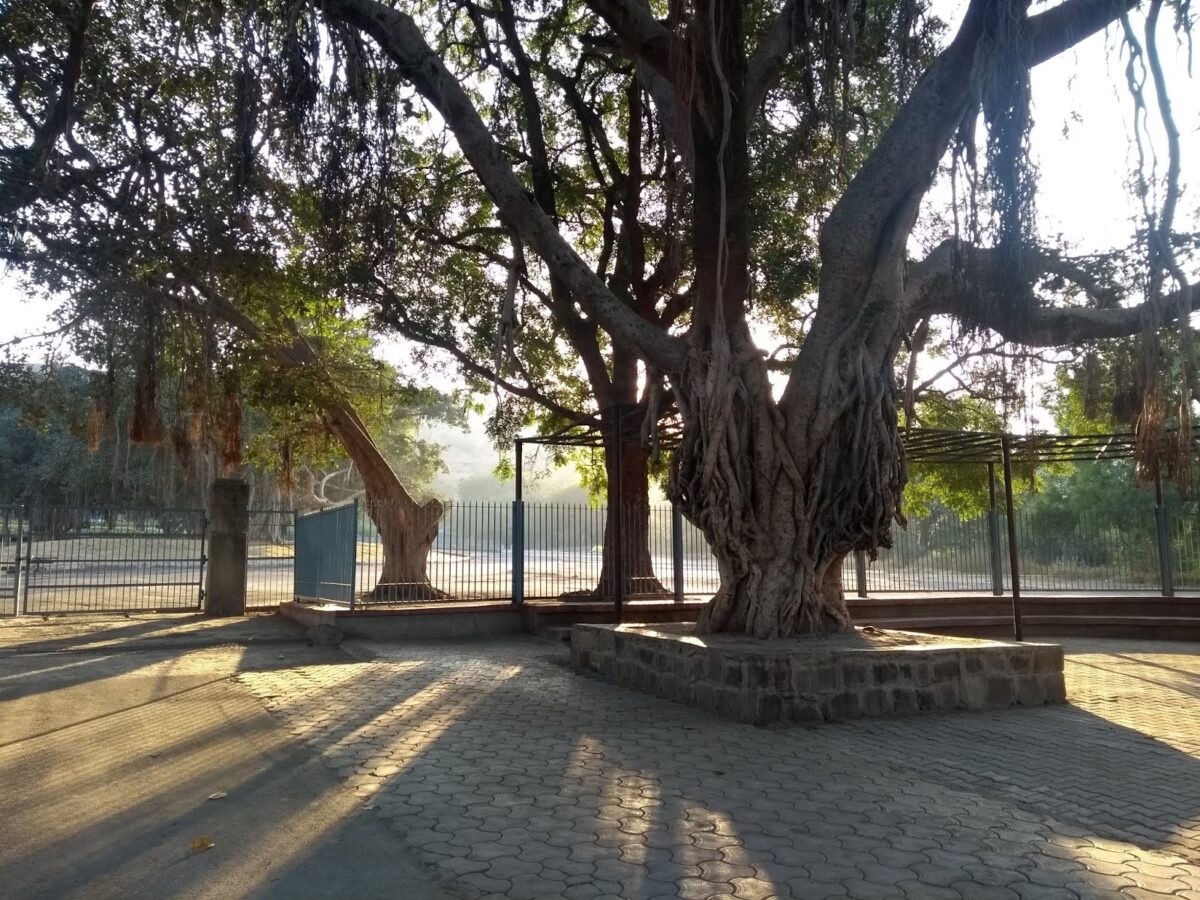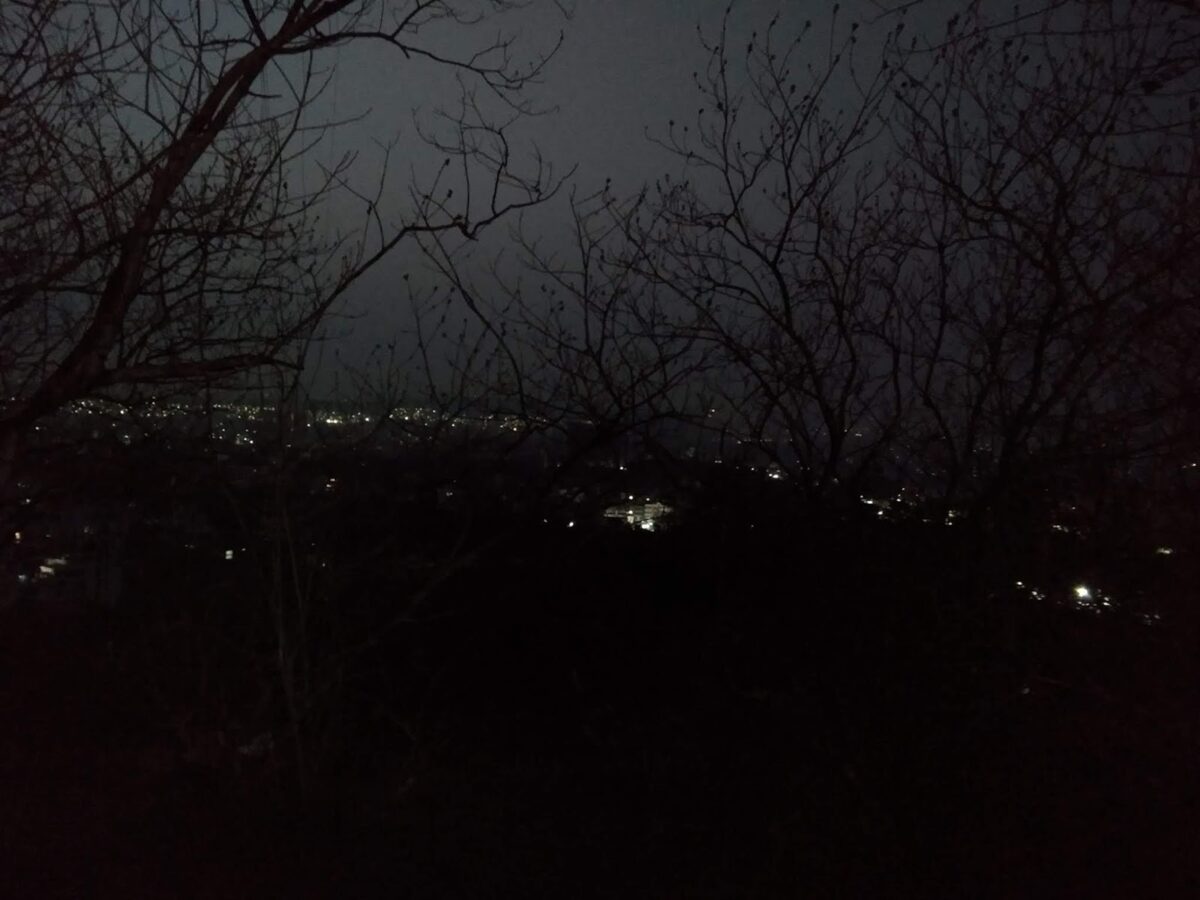 |
| Looking back as we climb up the tekdi – the city is awakening |
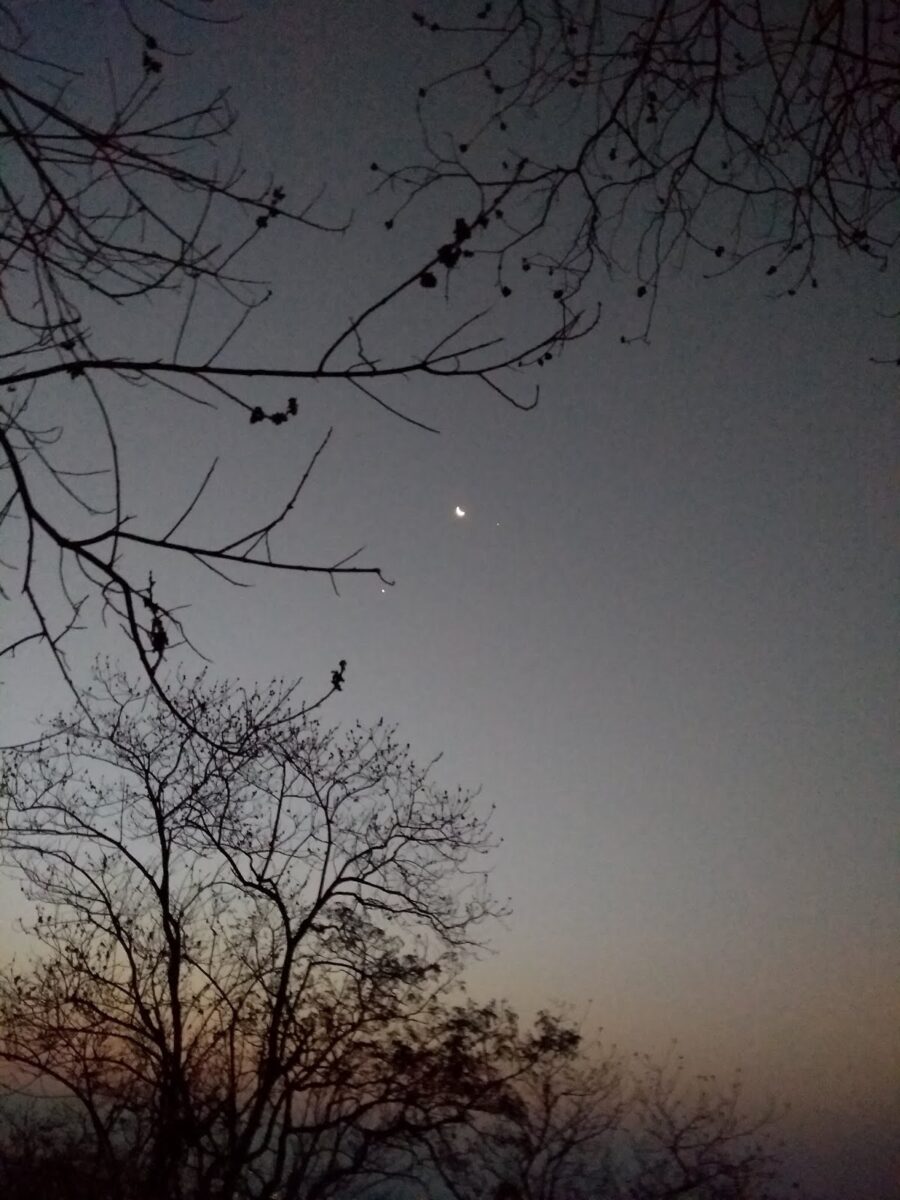 |
| The moon and the morning star shine brightly as the Sun prepares to rise |
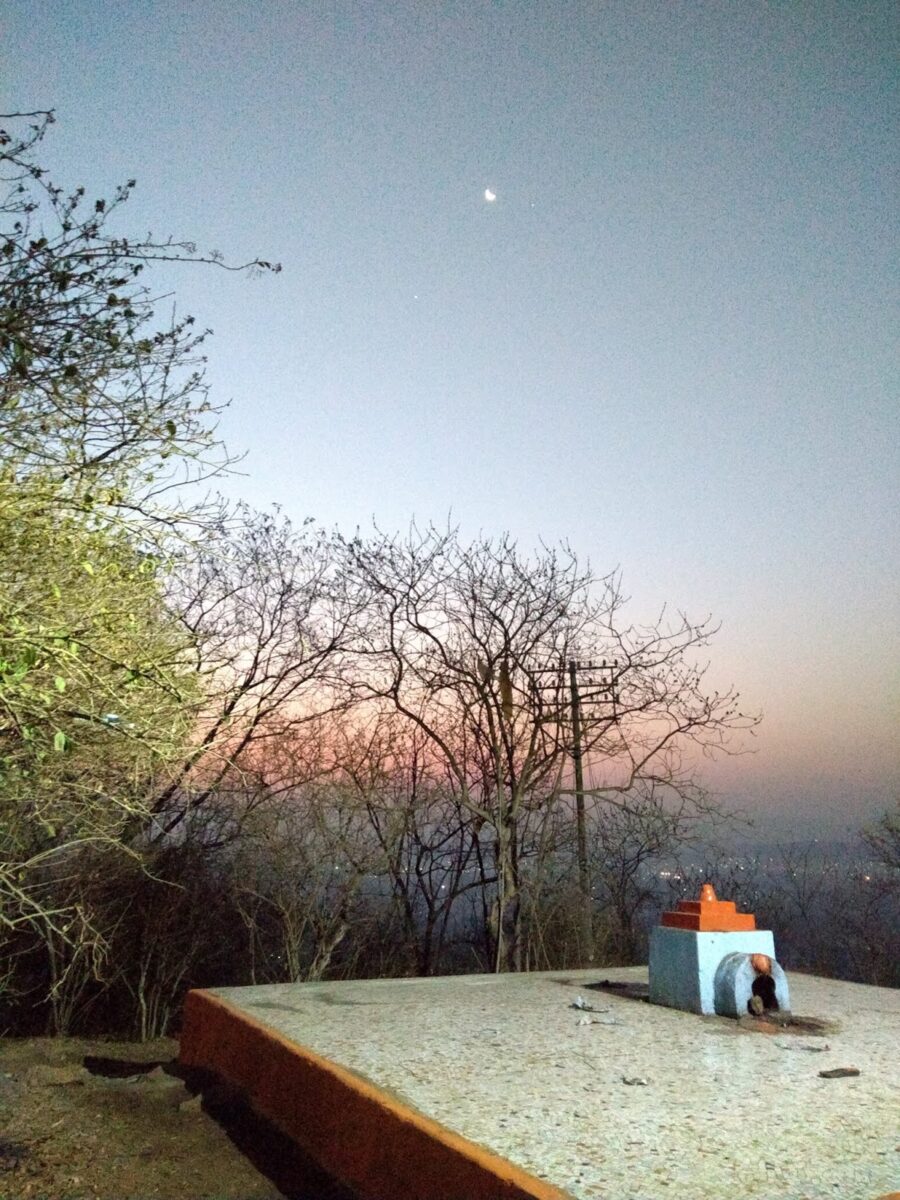 |
| Glorious morning colours |
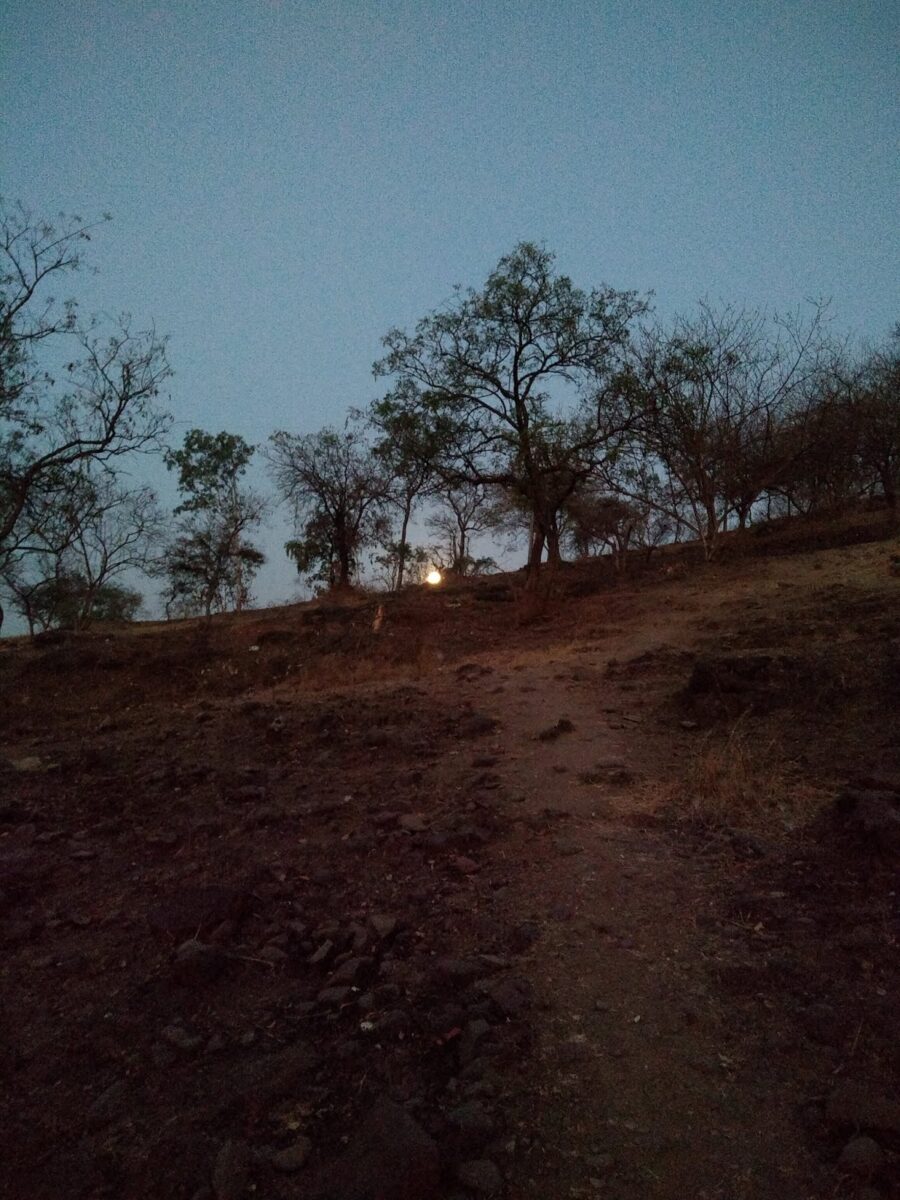 |
| Setting Supermoon |
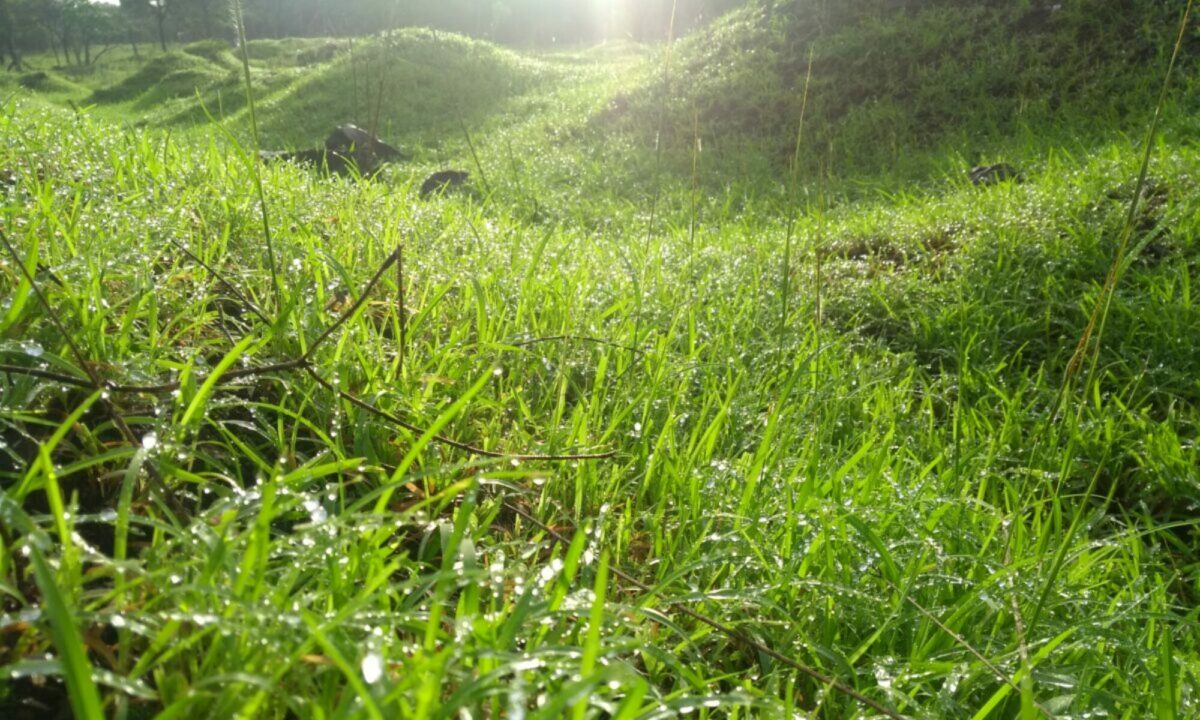
A khatta-meetha take on life around me through my presbiopic eyes!
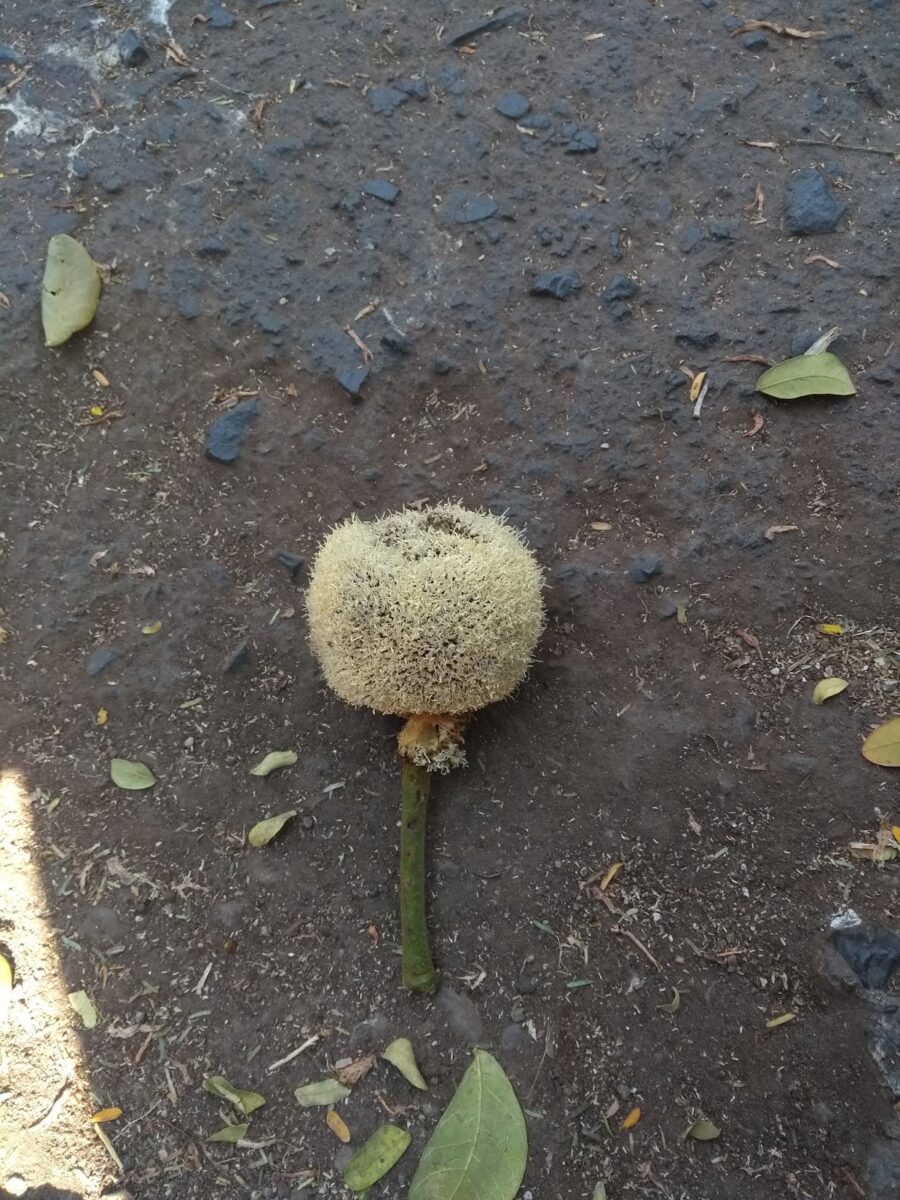
I am referring to Parkia biglandulosa which is locally called Chenduful belonging to the Mimosaceae family. Its a common avenue tree here and one realises its in bloom as one has to side step what look like furry balls when walking on the road. They obviously are not something kids have played with and one is compelled to look up. I have unfailingly been amazed to be looking up at what looks like tennis balls hanging down from the branches of the tree.
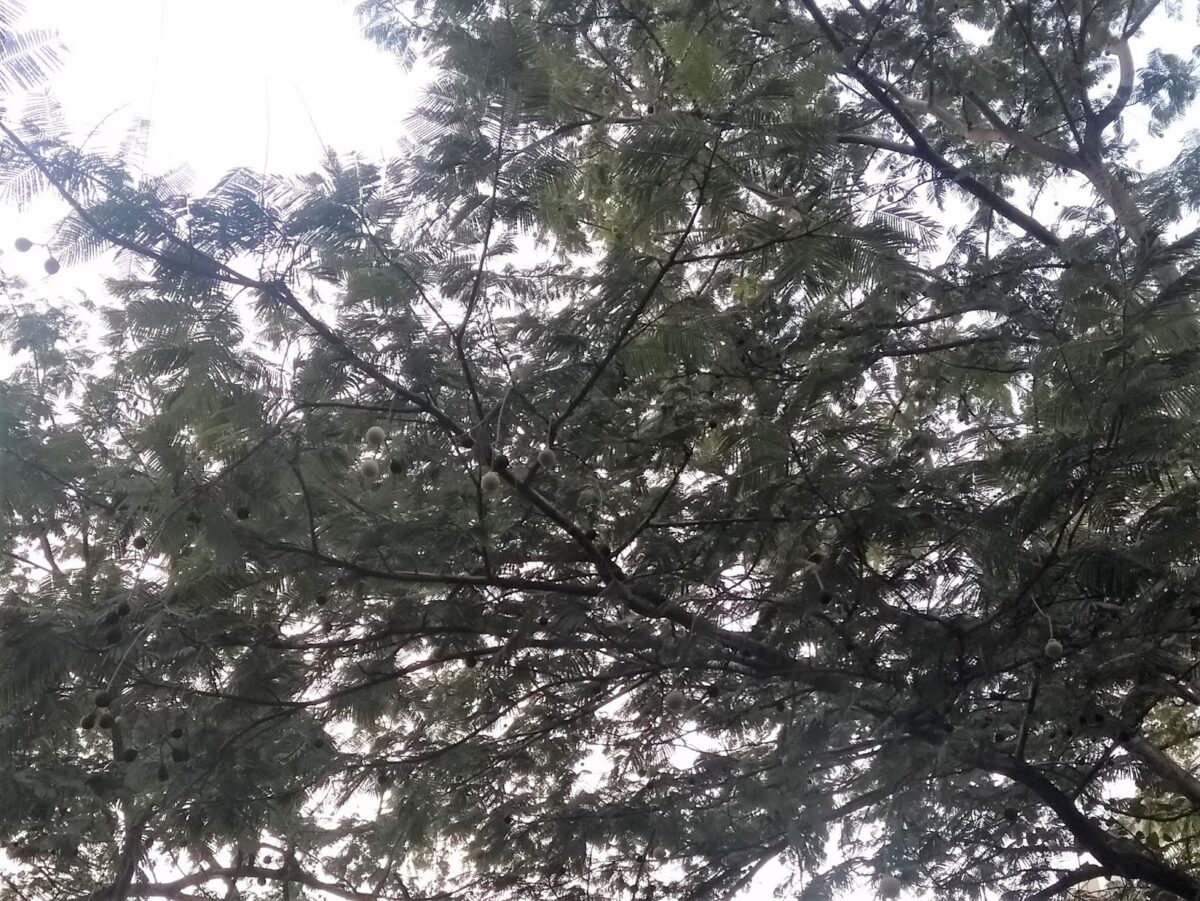
Each of these balls, is just the inflorescence and consists of several flowers. They remind me of tennis balls and I am still unable to understand why this Parkia is called Badminton Ball tree.. As far as I know, Badminton is played with a shuttlecock so…
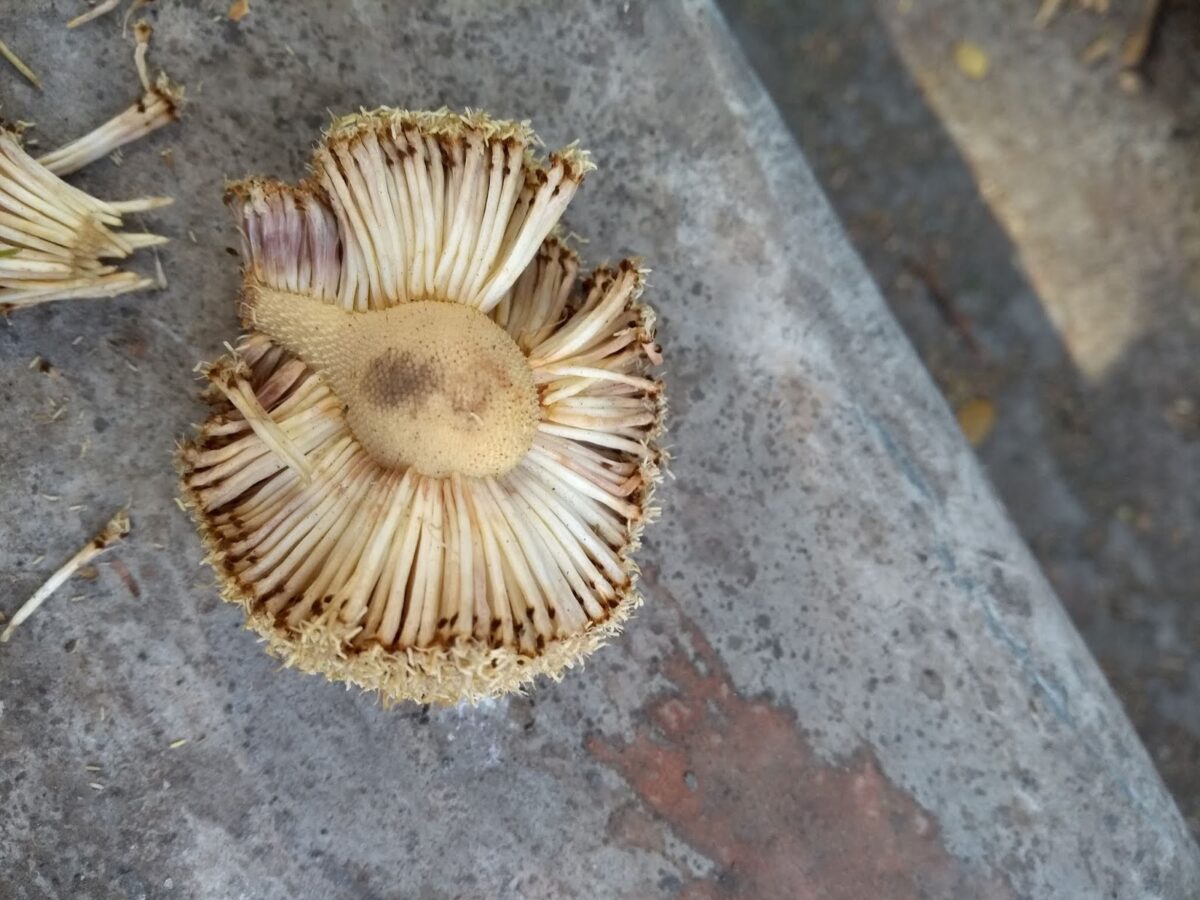
Parkia biglandulosa is not native to India but I have seen it growing across the country even at one of our bases in the north east. Our daughter remembers playing with these blossoms and even preserving one of the furry balls in a box.. She still doesnt remember why and what happened to it later! More recently, one of the children in my Tree Walk group collected it as a memory of our walk!
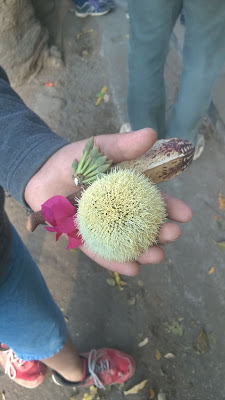
A lovely tall tree with delicate leaves that reminds of the Gulmohor. I am sure most of you would have noticed these fallen ‘tennis balls’. If not, do look out for them as Parkia is still blooming at least here in my city!
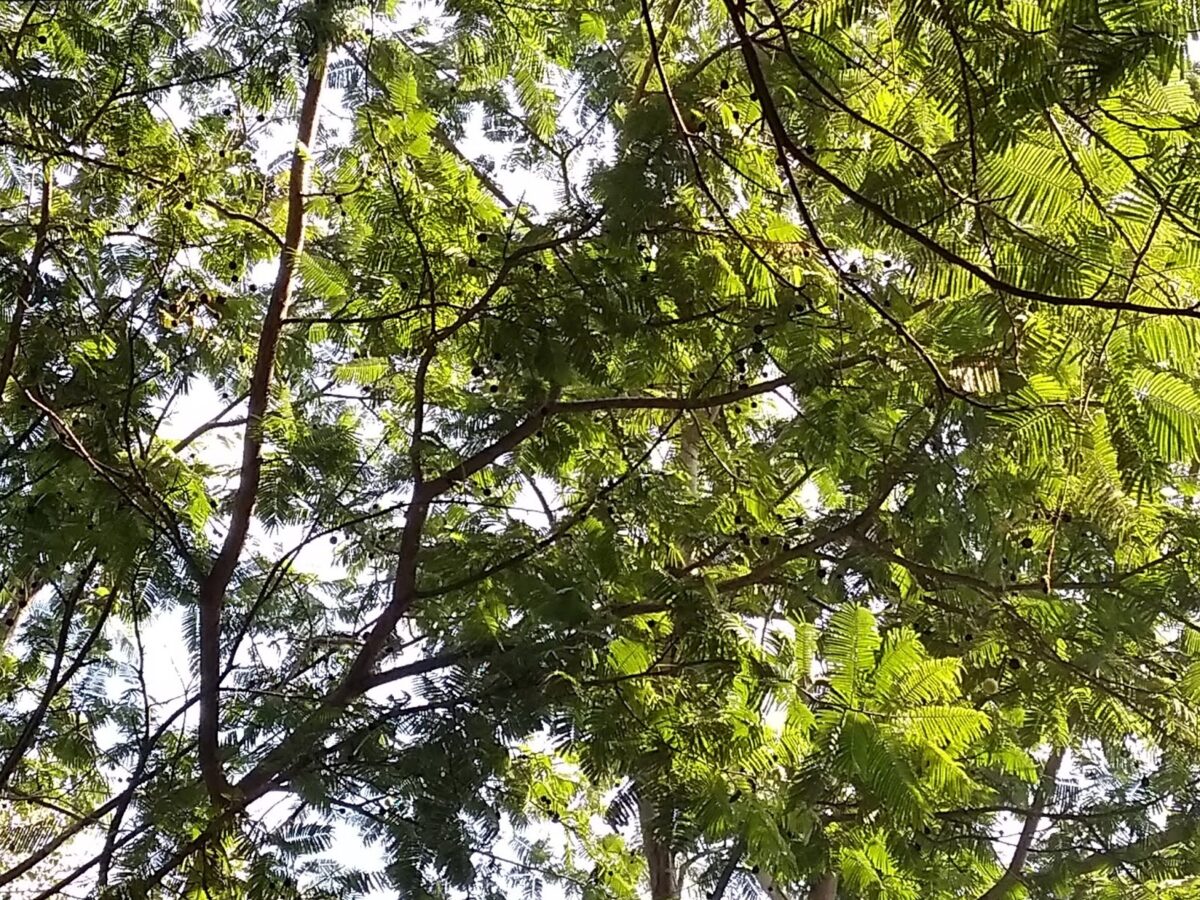
I am joining Parul in her ThursdayTreeLove bloghop. Do head over to see some great trees from around the world.
Better still, join in!
🙂
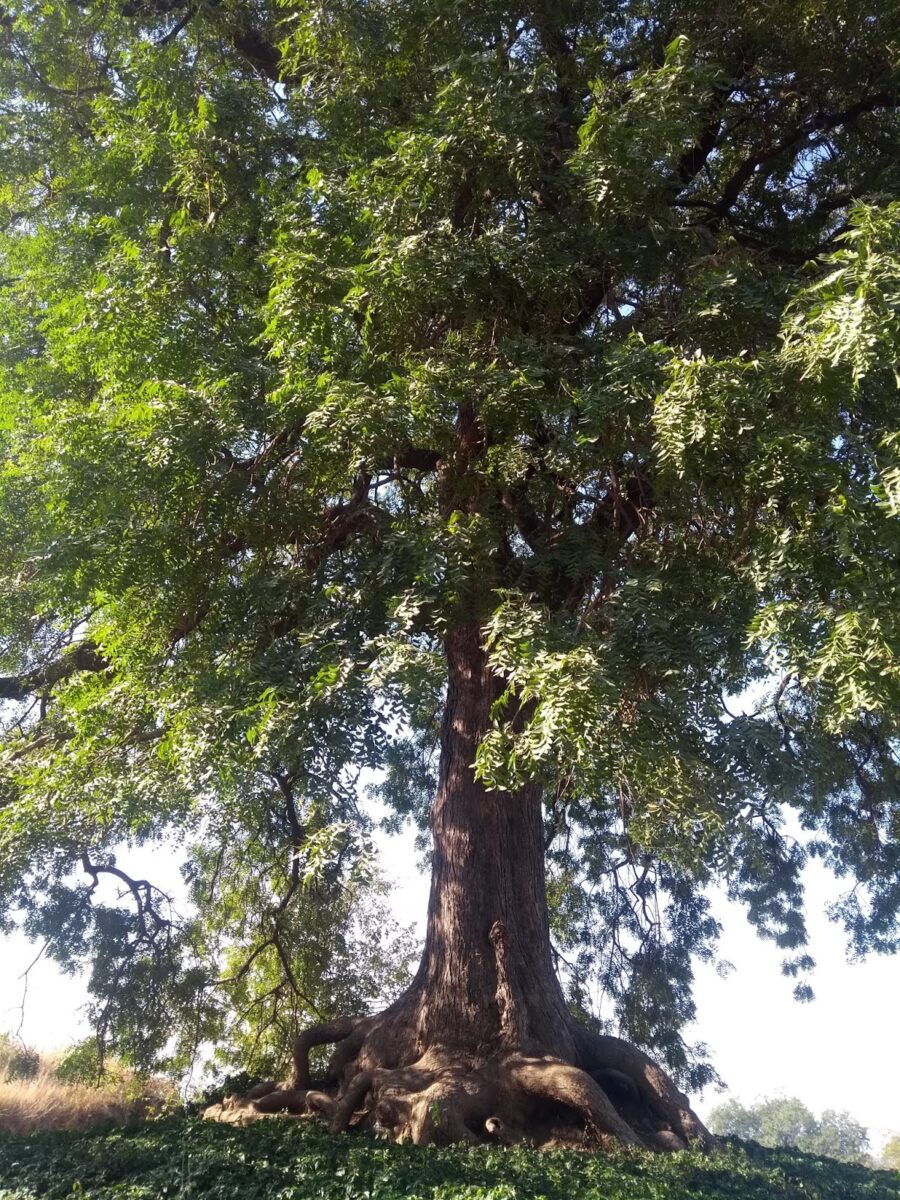
Continuing on this e-visit to Ellora, here is a massive Neem tree. It is growing on the right side as we face the Cave 16 Kailash Temple complex. The straight trunk its vast base are eye catching.. The dense foliage hid its branching and only made it more imposing.
Here is another view ..
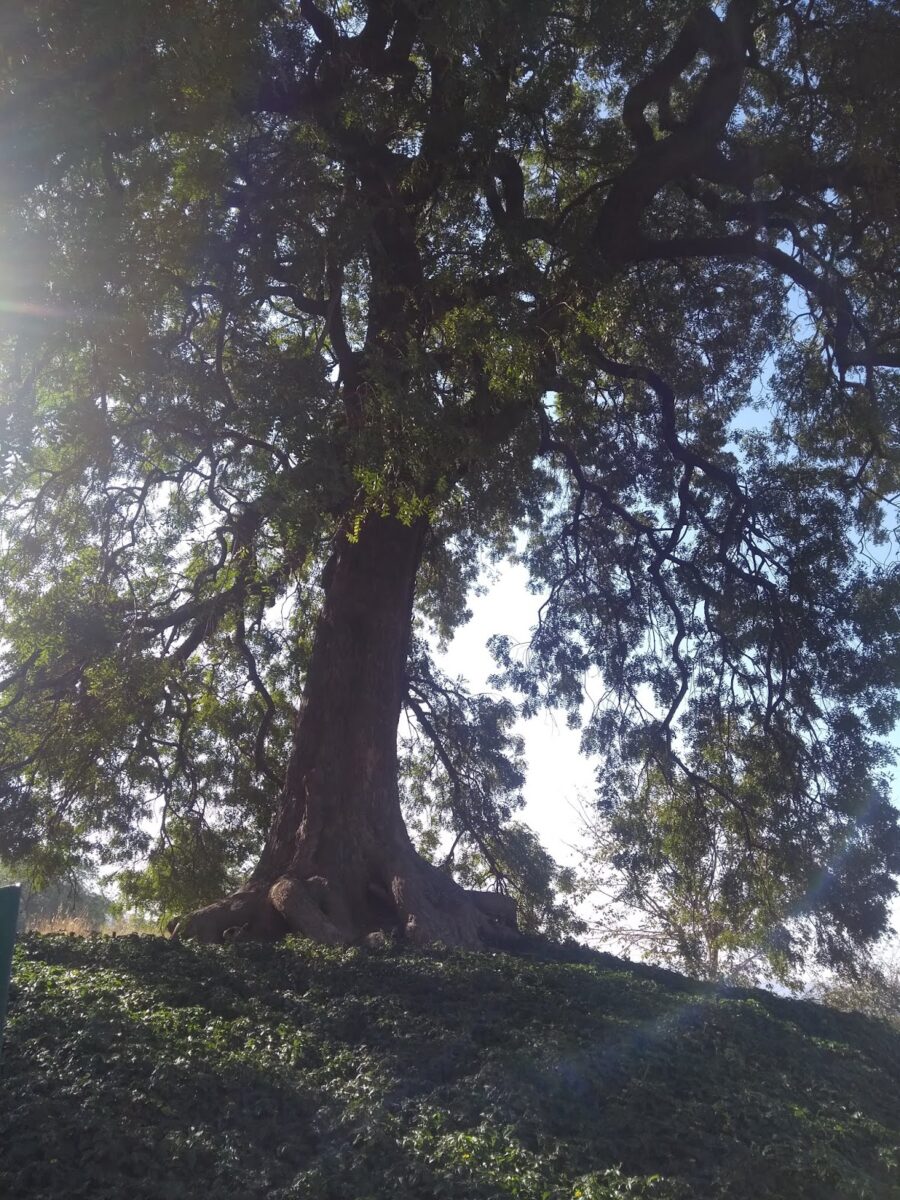
Later, I found that this tree is listed as the Kailashnath Neem under the Landmark Trees of India.
Going by the botanical name Azadirachta indica , it belongs to the Meliaceae family. Neem is a common species almost all over India. This is easily the tallest Neem I have seen!
I
have seen glorious trees at the Qutub Minar. Just proves that there’s more to archaeological sites than the structures.. We only need to look around!
I am joining Parul in her ThursdayTreeLove bloghop. Head over to see some fantastic trees from around the world. Better still, join in!
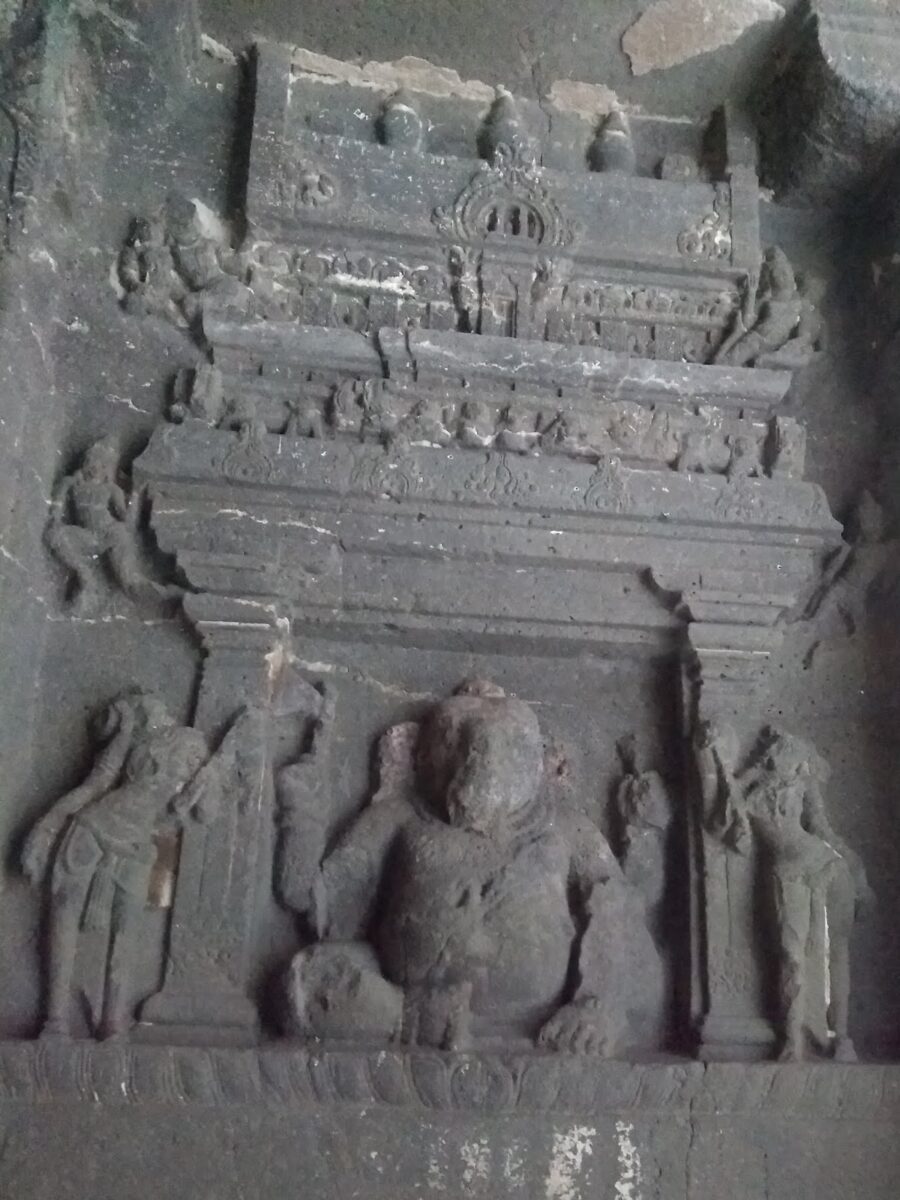


The carvings at the Cave 16 Kailash Temple at the Ellora Cave complex near Aurangabad convey several thoughts to the visitors. It is imperative to see these along with a knowledgeable guide to fully understand and appreciate this magnificent work. Ellora Caves is a UNESCO World Heritage Site.
The entrance has three statues which signify that 3 things are necessary to create a structure of this magnitude .. namely knowledge, strength and money.. this is respectively depicted by the statues of Ganesha, Mahishasurmardini and the Gajalakshmi.
(As told to us by our guide).
No image can do justice to the site and I strongly recommend everyone to visit this magnificent site.
